Module 2: Lesson 3
Self-Check 3
- Question 15 on page 98 of the textbook
-
-
In order to solve the question graphically, certain information needs to be substituted into the formula as shown:

There are two methods that can be used to solve this equation.
Method 1: Use a System of Two Functions
Graph the following functions, and determine the x-value of the intersection point of the two functions.

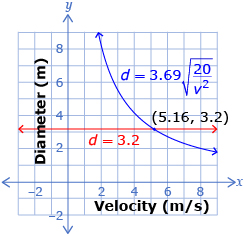
To the nearest metre per second, the landing velocity is 5 m/s.
Method 2: Use a Single Function
Rearrange the equation so that the equation equals zero.
so that the equation equals zero.

Graph the function , and then determine the x-intercept of the graph.
, and then determine the x-intercept of the graph.
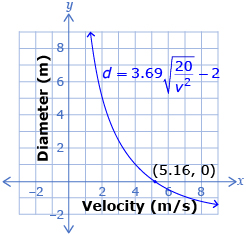
To the nearest metre per second, the landing velocity is 5 m/s.
-
In order to solve the question graphically, certain information needs to be substituted into the formula:
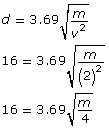
There are two methods that can be used to solve this equation.
Method 1: Use a System of Two Functions
Graph the following functions, and then determine the x-value of the intersection point of the two functions.

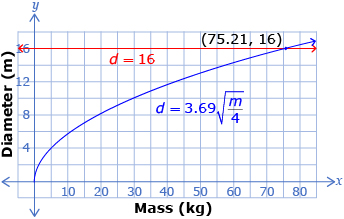
To the nearest tenth of a kilogram, the maximum mass of the parachutist would be 75.2 kg.
Method 2: Use a Single Function
Rearrange the equation
 so that the equation equals zero.
so that the equation equals zero.

Graph the function , and then determine the x-intercept of the graph.
, and then determine the x-intercept of the graph.
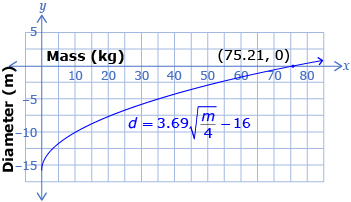
To the nearest tenth of a kilogram, the maximum mass of the parachutist would be 75.2 kg.
-
-
© 2012 Alberta Education